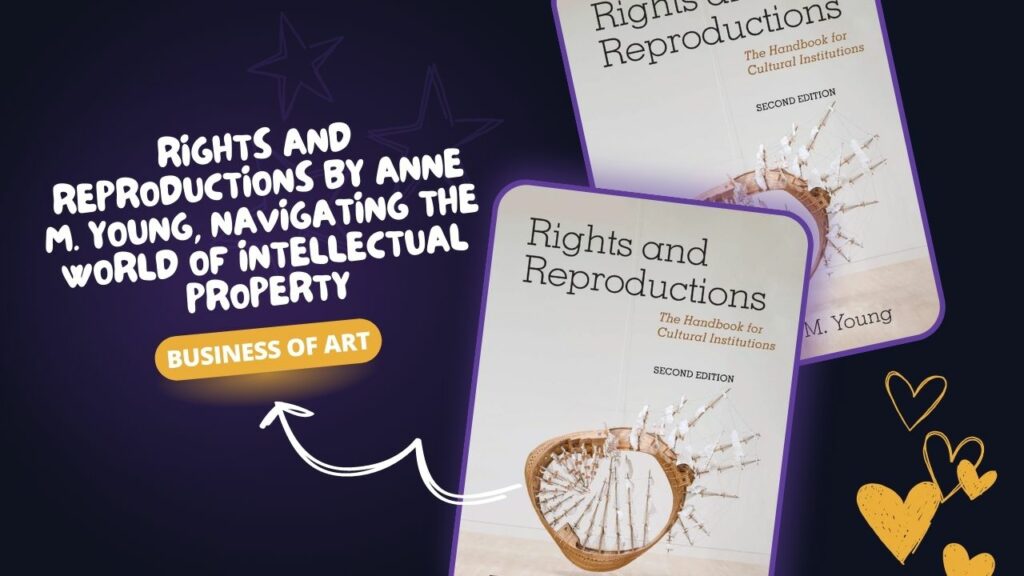Introduction
eBook This – “Rights and Reproductions: The Handbook for Cultural Institutions” by Anne M. Young is a comprehensive guide that addresses the challenges faced by cultural institutions when dealing with intellectual property rights and reproductions.
The book provides practical guidance and best practices to help organizations navigate the complex world of rights management and digital asset management, ensuring their collections are accessible while respecting legal and ethical considerations.
This article will explore the key concepts and recommendations presented in the book, as well as their application in real-world settings.
The Author: Anne M. Young
Background and Expertise
Anne M. Young is a recognized expert in the field of rights and reproductions, with a wealth of experience in managing intellectual property and digital assets for cultural institutions.
She has worked with various organizations, including museums, galleries, and archives, to develop and implement rights management policies and practices that balance accessibility with legal compliance and ethical considerations.
The Importance of Rights and Reproductions in Cultural Institutions
Rights and reproductions are essential aspects of managing collections within cultural institutions. They ensure that organizations can provide access to their collections while respecting intellectual property rights, generating revenue, and adhering to ethical standards.
By effectively managing rights and reproductions, institutions can protect their assets, enhance their reputation, and foster public engagement with their collections.
Key Concepts in Rights and Reproductions
Intellectual Property Rights
Intellectual property rights, such as copyrights, trademarks, and patents, protect the creators of original works and give them exclusive rights to control the use, distribution, and reproduction of those works.
Understanding these rights is crucial for cultural institutions to ensure they handle the materials in their collections legally and ethically.
Copyrights and Fair Use
Copyright law grants creators exclusive rights to their original works for a limited period. However, there are exceptions, such as fair use, that allow others to use copyrighted materials under specific circumstances, such as for educational purposes or commentary.
Cultural institutions must be knowledgeable about copyright law and fair use guidelines to avoid potential infringement issues.
Licensing and Permissions
When reproducing copyrighted materials or using them for specific purposes, cultural institutions may need to obtain licenses or permissions from the rights holders.
Licensing agreements specify the terms and conditions under which a work may be used, and obtaining permissions ensures that institutions respect the rights of creators and comply with the law.
Digital Asset Management
Digital asset management (DAM) involves organizing, storing, and managing digital files, such as images, videos, and documents, within an organization.
Effective DAM is essential for cultural institutions to ensure that their digital collections are easily accessible, secure, and properly maintained.
Revenue Generation and Cost Recovery
Rights and reproductions can serve as a source of revenue for cultural institutions through licensing fees, reproduction fees, and other income-generating activities.
Implementing cost recovery strategies can help institutions offset the expenses associated with managing their collections and providing access to them.
Implementing Rights and Reproductions Policies in Cultural Institutions
Developing a Rights and Reproductions Policy
A well-defined rights and reproductions policy outlines the institution’s approach to managing intellectual property rights and reproductions, providing guidance for staff and ensuring consistency in decision-making.
It should address issues such as copyright, licensing, permissions, revenue generation, and digital asset management.
Staff Training and Education
To effectively implement rights and reproductions policies, staff members need to be knowledgeable about intellectual property rights, licensing, and related topics.
Ongoing training and education ensure that staff can confidently handle rights and reproductions issues and make informed decisions.
Balancing Access and Control
Cultural institutions must strike a balance between providing access to their collections and maintaining control over the use and reproduction of materials.
This involves assessing the risks and benefits associated with different levels of access and implementing appropriate restrictions, such as watermarks or low-resolution images, to protect the institution’s assets.
Navigating Legal and Ethical Considerations
Rights and reproductions management involves navigating a complex landscape of legal and ethical considerations.
Institutions must be mindful of their legal obligations, such as copyright compliance, while also considering the ethical implications of their actions, such as respecting the rights of indigenous communities or addressing sensitive content.
Conclusion
“Rights and Reproductions” by Anne M. Young offers invaluable guidance for cultural institutions seeking to navigate the complexities of rights management and digital asset management.
By implementing the best practices outlined in the book, organizations can protect their assets, foster public engagement, and ensure the long-term preservation and accessibility of their collections.
FAQs
1. Who is the target audience for “Rights and Reproductions”?
“Rights and Reproductions” is intended for professionals working in cultural institutions, such as museums, galleries, and archives, as well as students and researchers interested in the field of intellectual property rights and reproductions management.
2. What are some key takeaways from “Rights and Reproductions”?
The book provides practical guidance on understanding intellectual property rights, managing reproductions, developing policies, implementing digital asset management systems, and generating revenue through rights and reproductions activities.
3. Why is rights and reproductions management important for cultural institutions?
Effective rights and reproductions management is essential for protecting an institution’s assets, ensuring legal compliance, fostering public engagement with collections, and generating revenue to support the organization’s mission.
4. How can cultural institutions balance access and control in rights and reproductions management?
Institutions can balance access and control by assessing the risks and benefits associated with different levels of access, implementing appropriate restrictions, and providing alternative means of access, such as low-resolution images or watermarked content.
5. What are some ethical considerations that cultural institutions should keep in mind when managing rights and reproductions?
Ethical considerations may include respecting the rights of indigenous communities, addressing sensitive content, ensuring transparency in decision-making, and considering the potential impact of rights and reproductions activities on the public’s perception of the institution.







